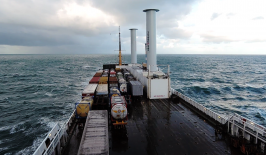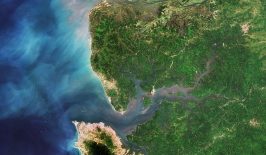One ambitious Silicon Valley project wants to help restore Arctic ice – and by doing so, stabilise global temperatures – by covering the region with tiny glass beads.
Geoengineering the planet has been a regular trope in science-fiction movies, where engineers employ a variety of methods to cool down the Earth – flooding an atmosphere with reflective dust to reflect away the heat, or putting up a huge umbrella in space to shade us from the sun. But the deliberate large-scale geoengineering of Earth, in this day and age, hasn’t seriously been part of the climate change discourse until very recently.
One new approach from Stanford and NASA scientists could change all that: Ice911, a non-profit organisation founded by Dr. Leslie Field, a Stanford consulting professor, and MIT & UC Berkeley alumnus. Dr Field started her work in this area in 2006, when she asked herself, “If not me, who? If not now, when?”
Dr Field and her Ice911 organisation presents the issue as such: Arctic ice is rapidly disappearing from the northern waters. Arctic ice melt appears to be a dangerous feedback loop which may result in the Earth more rapidly warming. Polar region ice reflects more of the sun than open ocean, acting as a natural heat shield. With less ice available, more heat is absorbed, which in turn results in less ice, and the cycle quickens. Given the Arctic ice cap has lost 75 per cent of its volume since 1979, we appear to be firmly in this cycle.
Ice911 proposes a solution that sounds hard to believe, but appears to be backed by sciectific rigour. The solution is hollow white silica-glass beads, which are to be spread on top of ice in strategic locations in the Arctic. The beads float on water, and stick when in contact with ice. By making young, low-reflective ice more reflective and increasing its albedo, less heat is absorbed by the ice, and the ice melts more slowly, preserving it for longer and in turn, preserving the heat-shield effect.
Following pond-sized testing in early 2013, 2017 and 2018, where the organisation had permits to cover 17,500 and 15,000 square metres (respectively) of Arctic ice with an automated deployment system, Ice911 published a paper on their research in May 2018, and the effort continues to gather momentum. It hopes to protect 15,000-100,000 square kilometers of ice in the Fram Strait or Beaufort Gyre in the Arctic within a few years, at costs claimed to be one-tenth of other methods (but still requiring hundreds of millions of dollars).
Another relatively well-proven method would be to pump cold sea water over ice to artficially build thickness. It’s a sound theory, but one published wind-powered concept would require installing around a not-unsubstantial 10 million wind-powered pumps to cover just 10 per cent of the Arctic.
Obviously, there are significant concerns about the addition of any material to the pristine Arctic region. Ice911 provides considerable detail about its silica-glass beads, which are made from silicon dioxide. Silicon is in fact the main constituent of 95 per cent of the rocks on earth, and 2.8 billion million tonnes (!) of it is currently to be found in the ocean as dissolved silica. Ice911 says its test show “have shown no adverse impact on wildlife” and they’re very clear in stating that their beads are not a source of microplastics. In fact, the material could ultimately dissolve to become a part of the silica that is in the ocean – feeding the natural silica cycle that many organisms depend on.
Will Ice911 work? Its passionate team believes so. It’s a moonshot that shouldn’t need to come to fruitition. But it may become a necessity unless greenhouse gas emissions are dramatically lowered, and we see a revolution in the most emissions-intensive areas of human life: energy generation, transportation, agriculture, and industry.






